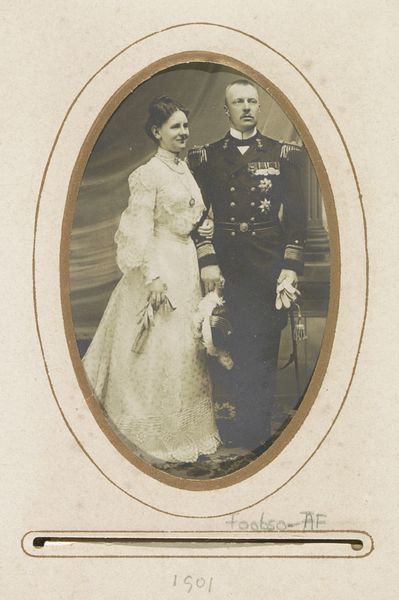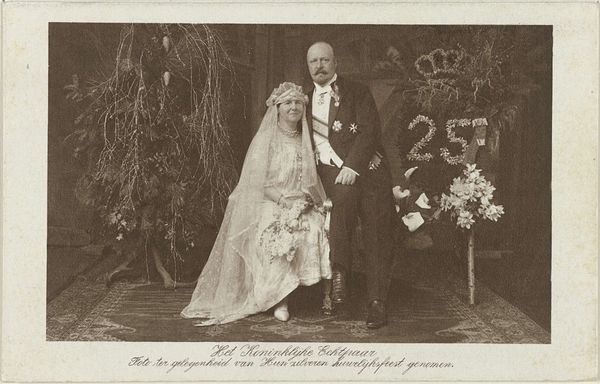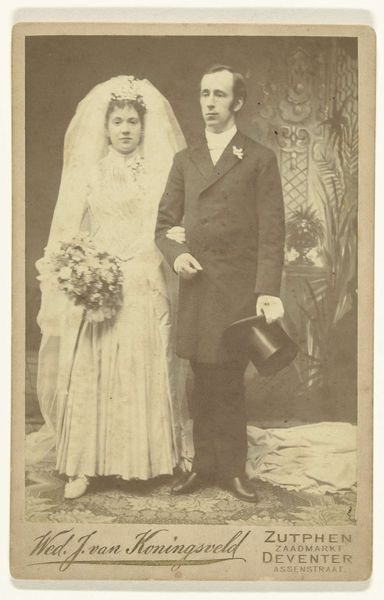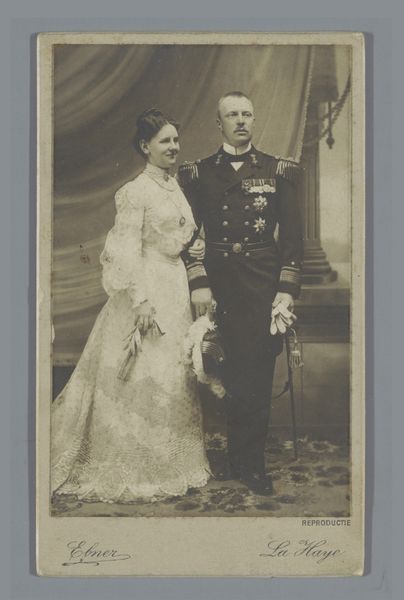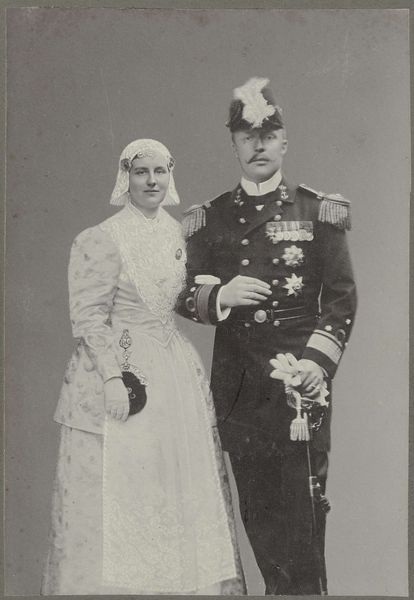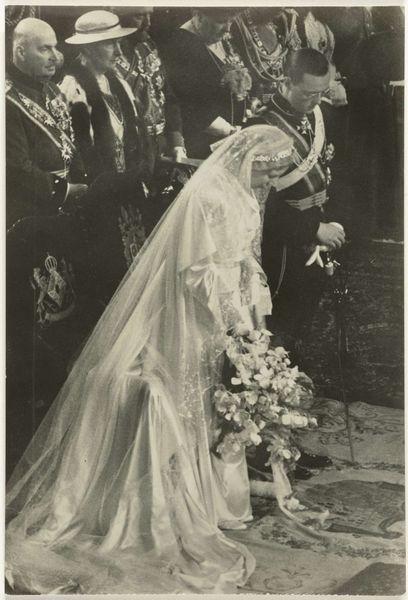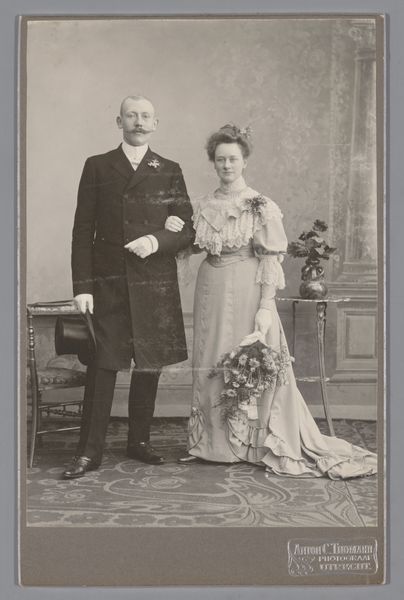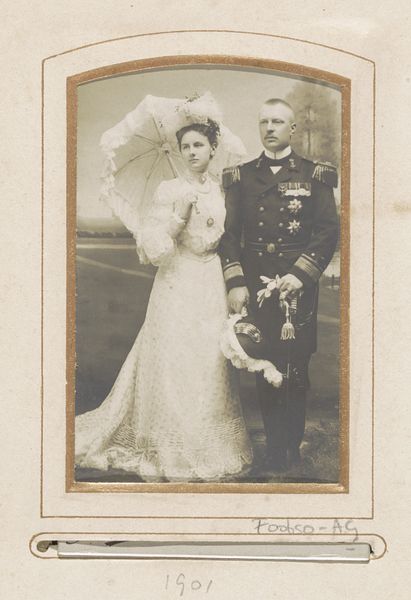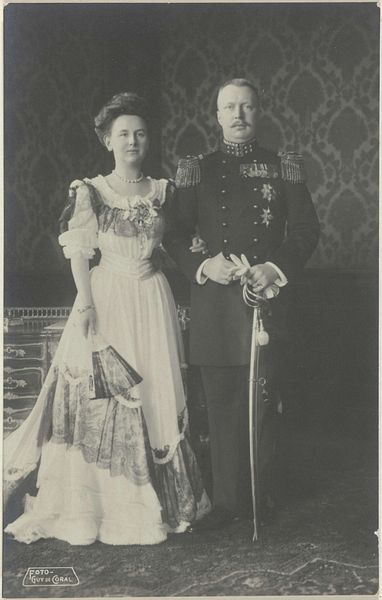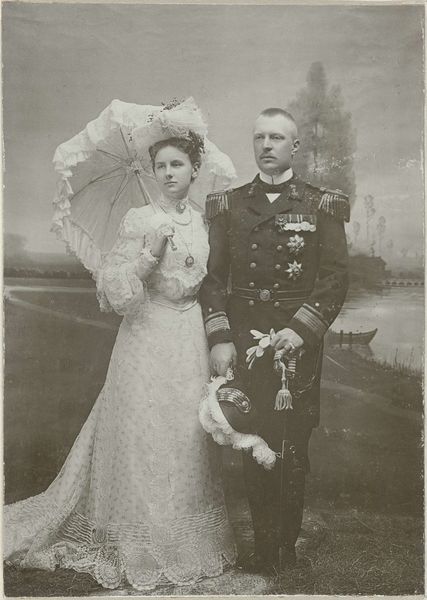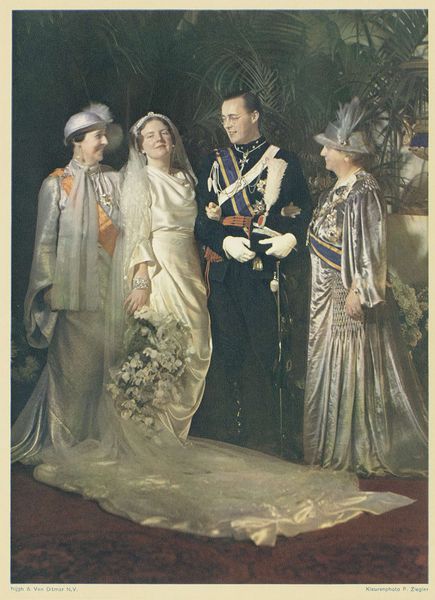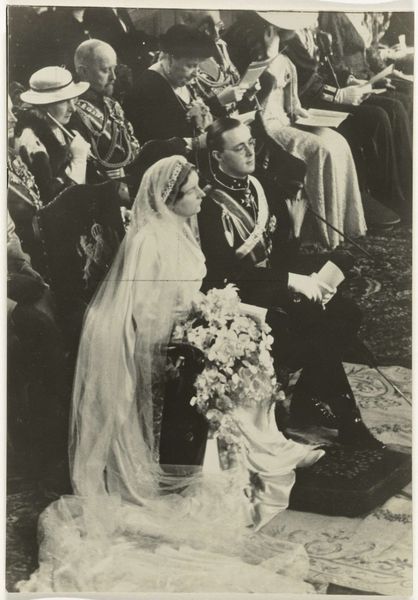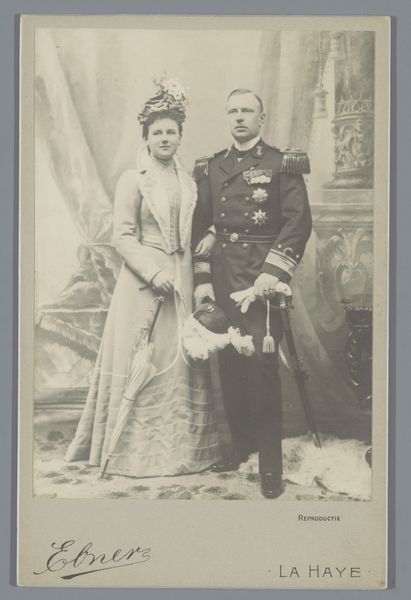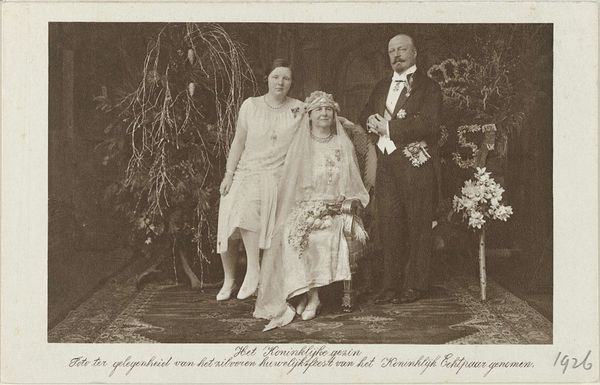
Portret van Juliana, koningin der Nederlanden, en Bernhard van Lippe-Biesterfeld 1937
0:00
0:00
franzziegler
Rijksmuseum
photography
#
portrait
#
wedding photograph
#
wedding photography
#
archive photography
#
photography
#
historical photography
#
couple photography
#
modernism
Dimensions: height 270 mm, width 197 mm
Copyright: Rijks Museum: Open Domain
Curator: Here we see Franz Ziegler's 1937 photograph, "Portret van Juliana, koningin der Nederlanden, en Bernhard van Lippe-Biesterfeld," held here at the Rijksmuseum. Editor: It strikes me as remarkably composed. The contrasting dark and light tones give a depth that's uncommon for a photograph of this era. The figures are balanced well. Curator: The photograph captures Juliana and Bernhard on their wedding day. Ziegler was likely commissioned for this piece; how do you think that influenced the material conditions of its making and reception? Editor: Undeniably, this would affect his approach to composition and the application of tone and lighting. Look closely; there’s a very formal interplay of verticals created by Bernhard's saber, and the edge of Juliana’s veil. Curator: That interplay is interesting because photography in the interwar years existed within a rapidly changing media landscape, impacting social perceptions. Consider the shift from formal royal portraiture painting toward these types of press images intended for mass circulation. Editor: I suppose I hadn’t considered its dissemination in quite that way, but you’re right. It appears both artistic and functional. I find myself drawn to the background, the ambiguous depth creating a space which, if read semiotically, seems more idyllic than strictly representational. Curator: True. Let’s also consider the economic circumstances. Photography became increasingly affordable during this period, enabling wider participation. A royal wedding depicted via mass media offered a moment of unity during growing political divisions. Editor: It's also hard not to appreciate the stark formalism—that is, the clear, sharp focus on line and balance juxtaposed with an obvious desire for a soft, romantic aura that seems tailor-made to fulfill its social purpose. Curator: That romantic sensibility might be an appeal to more human values as society approached darker times, too. What looks aesthetically refined might, conversely, underscore how class dynamics operate within wedding portraiture. Editor: Ultimately, both interpretations circle back to the image itself, its internal architecture shaped as much by what it pictures, as it is by that picture's intent.
Comments
No comments
Be the first to comment and join the conversation on the ultimate creative platform.
